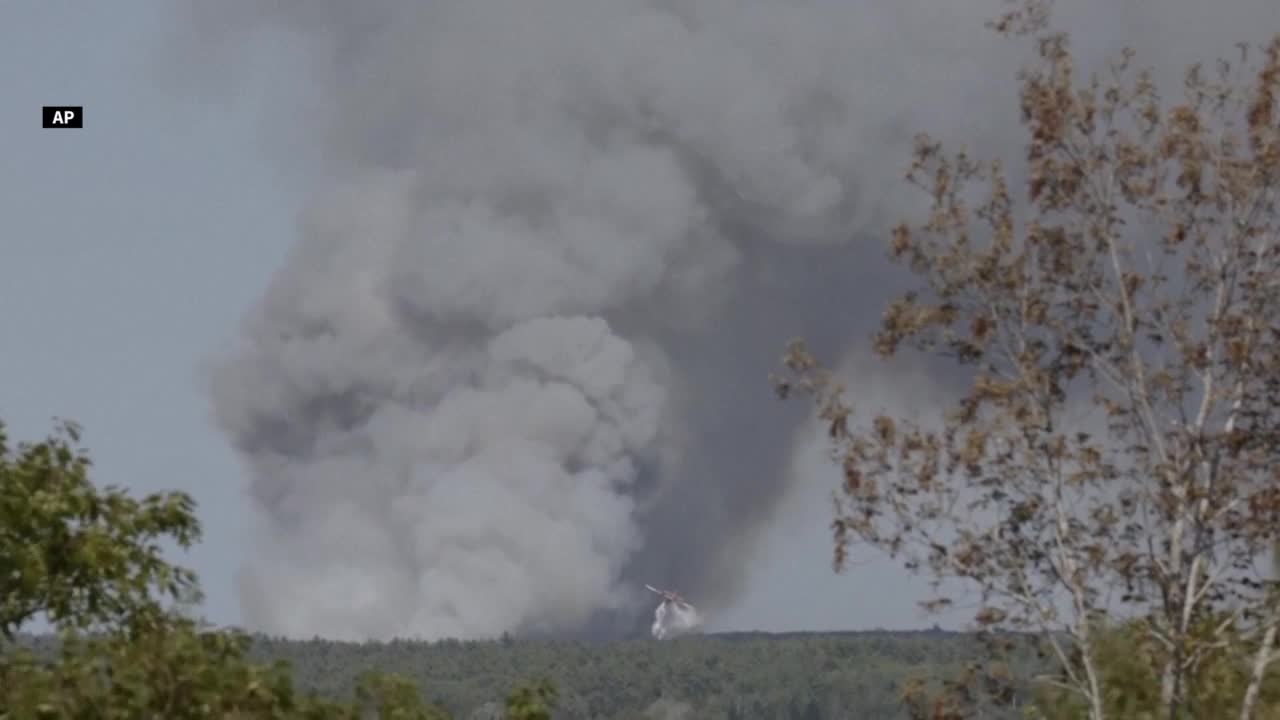U.S. firefighters have joined the fight against the wildfires in Canada.
In Val-d'Or, Quebec, just outside the fire zone, Scripps News spoke with officials to see what these U.S. crews are up against.
The biggest challenge is obviously a 1.5 million acre fire, but adding to that are language barriers in French-speaking Quebec, which can make working together more difficult.
Scripps News was granted access to be with U.S. fire crews working internationally.
"Tenacity has to show in you and you have to keep your head moving forward. It's not the most exciting. It can be pretty slow and we're getting coordinates and flying in and sending people out to the spots, but it is the most important part of the job," said Jameson Kane, with the Alaskan Smokejumpers.
Canada has been dealing with wildfires since March. The fires have been so intense that smoke has affected the air quality of other provinces and some parts of the U.S.
According to the Canadian Interagency Forest Fire Centre, there are currently more than 1,000 active fires in Canada, with 12.1 million acres burned.
"Now we're just trying to access all the areas that are still hot and put it out basically and leave this whole fire where we can walk away and the local resources can take over," said Kane.
In Quebec, a million and a half acres have been scorched, and in this time of crisis, there is a need for resources and aid from other countries.
The location of one fire is about 400 miles north of Montreal. A combination of Canadian, U.S. and South Korean crews are battling the blazes.
U.S. crews have been in Canada for nearly three weeks trying to contain the fire. At that location, there are more than 100 U.S. wildland firefighters from 20 different states.
According to the U.S. Forest Service, since May 8, around 2,000 U.S. personnel have been shipped to Canada.
Currently, there are 581 Americans assigned to multiple Canadian provinces. They're all working through language barriers and sharing tactics and resources.
Russell Long is the Operation Section Chief at National Incident Management Organization (NIMO).
"Yeah, it's always great to work with different people from different countries because we learn new techniques that people use. While we have our standard procedure we are able to learn from others on how they might do their work," said Long.
Due to safety, reporters were only allowed access to burned areas and to see crews doing arguably one of the most important jobs when it comes to containing the fire, and that's checking for hot spots.
"Our mission is to seek out the campfires, the little fire on the edge that has potential to escape if the weather picks up," said Brian Cardoza, the superintendent of Idaho City Hotshots. "The potential of the hot spots that we don't find on the edge left there to smolder under the right conditions can pick up and start burning again."
It's important for these crews to help out our neighboring country because this wildfire season isn't slowing down, and it's only a matter of time before we may need the same help.
"They're in need now, we're happy to help. We might be in need next year or maybe even this year. It's nice to stay close with our neighbors and we're all in this together," said Kane.
Trending stories at Scrippsnews.com



